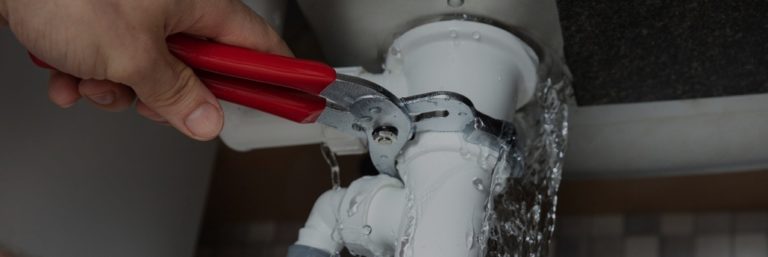Overview To Water Leakage Detection In Your Home
Overview To Water Leakage Detection In Your Home
Blog Article
This great article in the next paragraphs in relation to Detecting hidden plumbing leaks is quite attention-grabbing. Read on and draw your own personal assumptions.

Early discovery of leaking water lines can alleviate a potential catastrophe. Some little water leaks might not be visible.
1. Take A Look At the Water Meter
Every residence has a water meter. Checking it is a guaranteed manner in which helps you find leakages. For starters, shut off all the water resources. Guarantee no person will certainly flush, utilize the faucet, shower, run the cleaning machine or dishwashing machine. From there, most likely to the meter and watch if it will alter. Since no one is utilizing it, there need to be no movements. That shows a fast-moving leakage if it moves. If you detect no changes, wait an hour or 2 as well as inspect back once again. This indicates you might have a slow-moving leak that could even be underground.
2. Inspect Water Usage
If you find sudden changes, regardless of your intake being the exact same, it implies that you have leaks in your plumbing system. An abrupt spike in your costs indicates a fast-moving leakage.
At the same time, a consistent boost monthly, even with the very same routines, shows you have a slow leakage that's likewise slowly intensifying. Call a plumber to thoroughly examine your building, particularly if you really feel a warm location on your floor with piping below.
3. Do a Food Coloring Test
When it concerns water intake, 30% comes from commodes. Test to see if they are running properly. Decrease specks of food shade in the storage tank and wait 10 mins. There's a leak in between the tank and dish if the shade somehow infiltrates your dish throughout that time without flushing.
4. Asses Exterior Lines
Don't neglect to check your outside water lines too. Examination faucets by affixing a yard hose. Should water seep out of the link, you have a loose rubber gasket. Replace this and make sure all connections are limited. If you've got a lawn sprinkler, it will certainly help get it skillfully examined as well as preserved each year. One tiny leak can waste tons of water as well as surge your water costs.
5. Analyze the situation and inspect
Property owners ought to make it a routine to inspect under the sink counters as well as even inside cabinets for any bad odor or mold growth. These two warnings show a leakage so timely interest is required. Doing routine inspections, also bi-annually, can conserve you from a significant issue.
Inspect for discolorations and also weakening as the majority of pipes and also home appliances have a life span. If you believe leaking water lines in your plumbing system, do not wait for it to intensify.
Early discovery of leaking water lines can minimize a potential catastrophe. Some tiny water leaks might not be visible. Examining it is a surefire method that helps you find leakages. One tiny leakage can waste lots of water and also spike your water expense.
If you believe leaking water lines in your plumbing system, don't wait for it to rise.
5 Signs that Your Home Has a Hidden Leak
Your water bill is unusually high without explanation
Generally, your water bill tends to stay consistent throughout the year as long as the same number of people live in your household year round. The bill might be higher during certain times of the year, such as summer, when your lawn may require more watering than it does in cooler months. However, if you notice a rise in your water bill that you can’t explain, it’s an indicator that there’s a hidden leak somewhere in your home.
You hear running water
One of the biggest signs that you have a water leak is the sound of rushing water when no plumbing fixtures are on and when no water-using appliances are running. If you hear running water in your walls when no water is being used anywhere in your home, locate your home’s main water shut-off valve, shut off your water supply, and contact a plumber at once.
Your home smells musty
Hidden leaks often occur in dark spaces, such as behind walls or under carpeting. Incidentally, darkness and moisture can create an ideal breeding environment for mold or mildew. If you start to smell mildew or the scent of rotting wood or stagnant water around your home, it’s a fair bet that a leak is the culprit.
You find wet spots around your home
The wet spots usually show up as moist areas in your carpeting. If your home has a basement level, puddles on the floor could indicate a slab leak. Outside, unexplainable puddles or lush, green patches in your yard often mean that there’s a leak in your sewer line or main water line.
You have stains, bubbles, or condensation on your walls/ceiling
Stains or condensation on your walls or ceiling are both major signs of a hidden leak. Also, drywall (AKA. sheetrock) is very absorbent, and as it takes on more water from a leak behind a wall, it will start to bubble, swell, or warp. If you see this happening in your home, don’t wait to contact a plumber before the water damage spreads.
https://www.ezflowplumbingaz.com/blog/2019/june/5-signs-that-your-home-has-a-hidden-leak/

Do you like reading about Finding hidden leaks? Place a review further down. We would be glad to see your ideas about this review. We hope to see you back again soon. Are you aware of another individual who is serious about the niche? Take a moment to promote it. I am grateful for your time. Don't hesitate to visit our site back soon.
Report this page